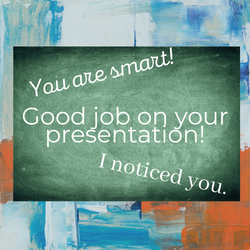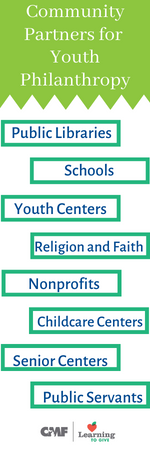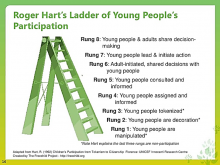Best Practices for Youth Engagement
This resource was developed in collaboration with the Council of Michigan Foundations (CMF) Youth Philanthropy Task Force powered by Michigan youth, CMF members, and nonprofit leaders. For links to all the resources, go back to the overview.
Best Practices for Youth Engagement
Why Youth?
"I will be the adult in the room one day, but today I am the youth. One day and today, I am equally valuable." - Laken Chapin, Mawby Intern
Youth may bring the following to community-centered collaboration:
- New ways of thinking, diverse perspectives
- Growth mindset, adaptability, and openness to differences
- Curiosity and courage to take risks
The experience may help youth gain awareness of the following:
- Roles of the different sectors, community assets and people
- Variety of ways to impact change, the value of civic engagement
- Career opportunities
- Their own potential and talents; empathy, generosity, and problem-solving skills
Nothing For Us Without Us
- When planning for anything that affects youth, prioritize seeking input from youth - the people most affected. Adults mean well when they set up youth programming, but they cannot see from the youth lens.
- Youth, especially from diverse perspectives, are often underrepresented in the philanthropy sector. This may be because people do not know the benefits of engaging youth perspectives and leadership. It may be because adults think they know what youth need. This guide, Adultism to Adult Supported, can help adults have a growth mindset and welcome youth participation.
- Here are some examples of youth-led projects that address issues affecting youth:
-One high school group initiated a community-wide initiative to smother the negative effects of social media and bombard their peers with messages that show them they matter.
- An 11-year-old taught art to elementary children who didn't have art in their school and sold art to raise funds for an organization that serves families who are homeless.
Engage Diverse Young People
When developing projects and engaging diverse people (of all ages) in the community, it is helpful to deliberately seek participation and networking from a variety of places.- Begin with a community scan. Examine what is already happening with youth in your community and other communities. This can provide a model or partnerships and facilitate finding the best resources and connections. Look for youth leadership and passion across organizations and the community. These examples may inspire different ways community organizations can include youth. Look for stories of the many different ways youth lead, volunteer, serve on committees, and use their voices.
- Seek collaboration across sectors. The partners (listed on the right) are some examples of organizations that could be invited to collaborate on youth initiatives. This may be where youth are already engaged, or they may serve as hosts or networking partners to connect people, needs, places, and opportunities.
- Put equity in the center of youth engagement. Work toward youth engagement representing the demographics of your community. These Tips for Engaging Different Personalities help you keep equity and inclusion in the center of your group work. This Inclusive Communities toolkit equips youth to speak up to ensure all young people feel included. These activities from Learning to Give's Youth Group Facilitator Guide promote diversity, equity, and inclusion (DEI) in your practices. Think about how the organization can adapt to respect and involve youth participation, rather than expecting youth to adapt to the adult routines.
- Invite youth to get to know their community needs and nonprofits. Learning to Give's Open Doors to Your Community can inspire and guide youth to contact nonprofits. This community mapping activity guides youth to get a full picture of the sectors and assets in the community.
Overcome Barriers and Engage Youth Strengths
It can be a difficult step, even with the best intentions, to share decision-making with youth. Authentically including youth voice may involve shifting the way you traditionally engage young people.Hart’s Ladder of Youth Participation illustrates the ways to engage youth meaningfully. Rather than seeing the relationship as something adults do for youth, this model challenges adults to trust youth as critical to growth and sustainability. The shift in expectations involves trusting in a reciprocal relationship - truly believing they have meaningful contributions and supporting them with flexibility.
Youth, especially from diverse perspectives, are often underrepresented in the philanthropy sector. This may be because people do not know the benefits of engaging youth perspectives and leadership.
Sometimes there are unseen barriers that keep young people from meaningful participation in community and philanthropy. This document shares some common barriers and ways the community can support solutions that empower and encourage youth leadership.
Tools for Team Trust and Belonging
- Youth can bring a fresh perspective if adults can step back and adapt in ways that welcome and respect youth participation, rather than expecting youth to adapt to adult perspectives. The tips and activities in this resource help build youth trust and belonging: Adultism to Adult Supported
- Move beyond superficial conversations with these tips for having Critical Conversations.
- Establish and review group agreements at the start of meetings to build trust and promote equity and shared power.
- Adult facilitators are most effective when they value youth as leaders. Here are ways to view different Facilitator Roles.
- Teach the skills of philanthropy with Learning to Give resources, such as the Youth Group Facilitation Guide.



